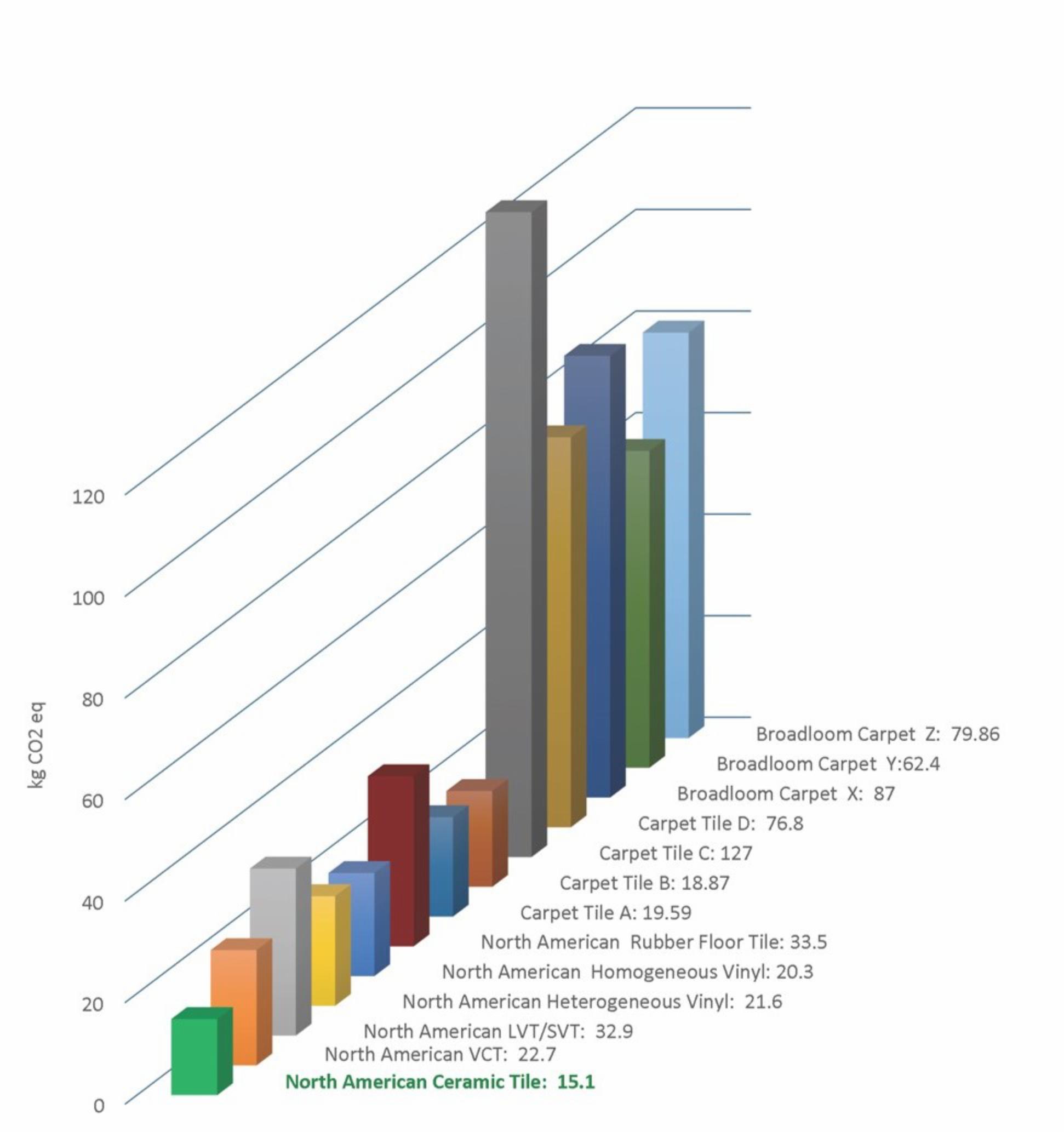Reducing our carbon footprint with tile: Part 5
Environmental Product Declarations (EPDs) and how they report Global Warming Potential (GWP)
by Scott Conwell, FAIA, FCSI, LEED AP, Director of Industry Development International Masonry Institute
When considering the impact building products have on environmental and human health, it is important for manufacturers to quantify and report this data in a way that allow designers to comparatively predict these impacts during the product selection stage. The most common method for reporting this complex data is the use of Environmental Product Declarations (EPDs). EPDs allow material manufacturers to report Global Warming Potential (GWP) and other health impacts across all stages of a building’s life. TCAA contractors should have a basic understanding of EPDs and how they help position tile as a low carbon material so they can communicate the sustainable benefits of tile to their customers, clients, and stakeholders.
Click here for a short video clip talking about the basics of EPDs.
Tile’s industry-wide EPDs
Many individual tile and setting material companies in North America offer single-company, single-product EPDs, and these documents are helpful when the exact product to be used is known. But for a broad overview of these materials, it is convenient to refer to the industry-wide EPDs produced by TCNA and their manufacturer partners, which present the industry average GWP values for domestically produced tile, mortar, and grout based on values reported by the major manufacturers of these materials.
The key output of any EPD is the material’s Global Warming Potential measured in kg of CO2 per m2 of building area, making it easy to compare GWP of different flooring materials.
Design professionals are encouraged to download the industry-wide EPDs for tile, mortar, and grout from the TCNA’s website and closely examine the health and environmental benefits of tile and stone relative to other floor finishes. While these materials may not have the cheapest initial cost, they use safe ingredients, and when installed with qualified labor they will last the life of the building and reduce its carbon footprint.
Click here for a short video clip showing the industry-wide EPD for ceramic tile, and how it reports Global Warming Potential (GWP).
EPD Product Category Rules (PCRs)
EPDs are useful for comparing impacts of different building materials because they present information in a standardized format. The validity of any EPD assumes that it was prepared in accordance with its associated Product Category Rules (PCRs) developed by an unbiased Program Operator.
PCRs are developed with input by material manufacturers and trade associations under the umbrella of a Program Operator, an independent agency that conducts, administers, and supervises EPD development according to ISO standards. PCRs set the basis for measuring the environmental attributes of product in a certain group - flooring for example. The PCR will inform the Life Cycle Analysis (LCA), and in turn the LCA and the PCR together inform the EPD. Lots of alphabet soup, but this is important and it’s the direction the industry is going.
The Product Category Rules for flooring were developed jointly by many flooring companies and organizations coming from the resilient, carpet, tile, wood, and laminate flooring industries. UL Environment is the program operator for all flooring EPDs.
According to the PCRs for flooring EPDs, a 75-year building service life must be considered, along with the number of replacements or refurbishments of the flooring within the service life. Put another way, the PCRs for flooring require a cradle-to-grave evaluation, therefore they must consider extraction, production, construction, use, and end-of-life stages for the flooring material. Since the Reference Service Life (RSL) of the tile assembly is also 75 years, routine maintenance is considered in its projected GWP, but replacement of the flooring is not. Therefore, this cradle-to-grave analysis favors tile, stone, and other hard flooring materials since their service life is 75 years. Unlike vinyl, wood, carpet, and laminate, no tile replacement need be considered for the purposes of the EPD.
Click here for a short video clip showing the role of PCRs in the development of EPDs for flooring, and how tile benefits from the cradle-to-grave reporting rule.

Flooring GWP Comparison
To accurately compare the environmental impacts of competing flooring materials, it is important to have consistent and reliable EPDs that conform to their industry’s Product Category Rules when reporting Global Warming Potential. EPDs should not be biased toward one material or another.
If a flooring manufacturer were to substitute a “cradle-to-gate” Life Cycle Analysis (LCA) for the PCR-required “cradle-to-grave” LCA, the results would be unfairly skewed to an artificially low GWP. For example, not declaring GWP during the product use stage of a building’s 75-year service life, especially if it’s a product that will need replacing at least once in those 75 years, is misleading at best and deceptive at worst.
The purpose of the Flooring PCR’s standard requirements for cradle-to-grave LCAs is to ensure consistent and reliable EPDs from which designers can make informed material selections. Thankfully, most manufacturers of soft flooring goods are forthcoming with their products’ shorter service life and publish EPDs that are accurate and useful. But because a few take liberties with the Product Category Rules, specifiers are advised to take a close look at the EPDs of the materials they’re considering, particularly in the Product Use stage of the LCA.
Click here for a short video clip summarizing the Global Warming Potential (GWP) of tile compared to other floor finishes.